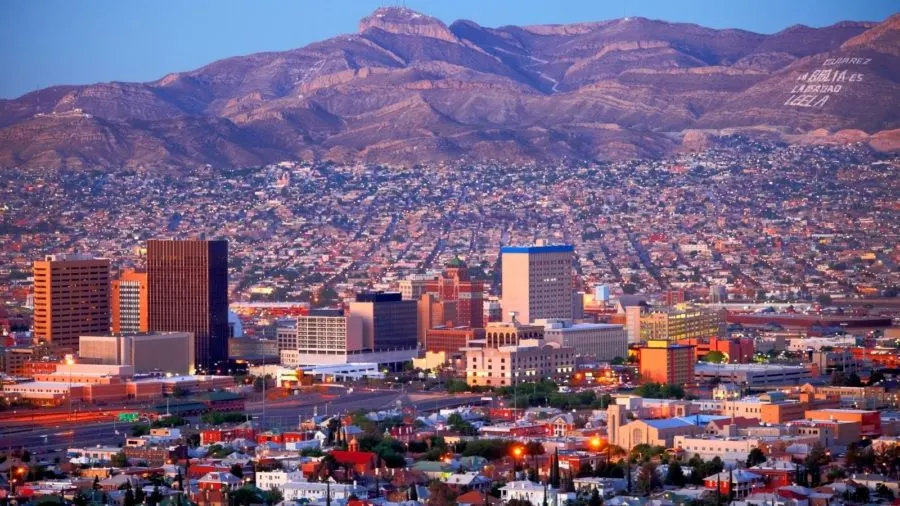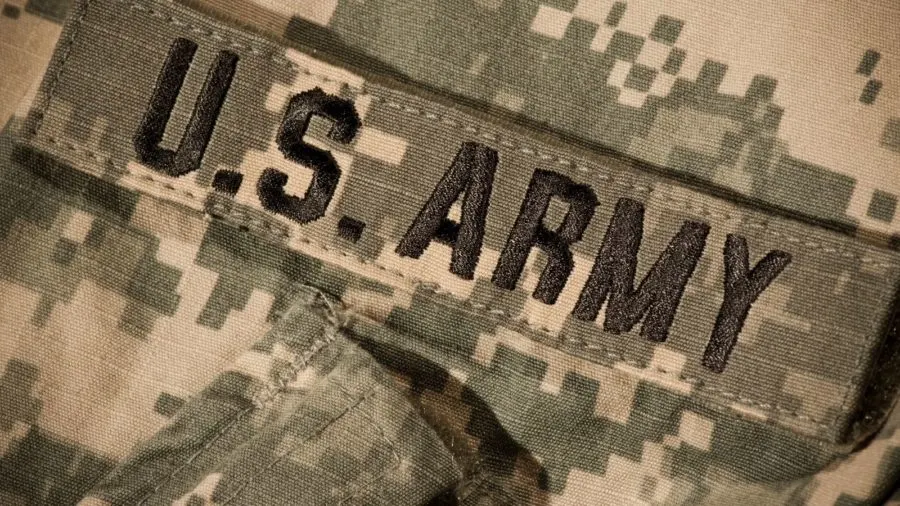As the largest city on the U.S.-Mexico border, El Paso is a destination filled with south-of-the-border charm, big city excitement, and rich history.
On the state’s westernmost corner sits El Paso, the largest city on the U.S.-Mexico border. A bilingual community with 76 percent of the population of Hispanic descent, the city also has both Southwestern and Native American influences.
El Paso is linked economically and culturally to nearby Juárez, Mexico, located just across the Rio Grande (known as the Rio Bravo in Mexico).
International trade keeps the border busy in both directions; El Paso also serves as a manufacturing center for much of the Southwest, especially in cotton clothing production.
Surrounding the city are the Franklin Mountains, the southernmost tip of the Rocky Mountains. This region is part of the Chihuhuan Desert, although with altitudes that vary from 3,762 feet in the city to 7,200 feet in the mountains, climate can vary.

Table of Contents
History of El Paso
El Paso was originally the home of the Native Americans the Spaniards named the Manso and the Suma Indians. The region was claimed for Spain in 1598 by explorer Juan de Onate, who named the site El Paso del Norte.
Six decades later, priests began establishing a series of missions in what is now Juárez. In 1680, the Pueblo Indians drove Spanish settlers out of northern New Mexico; the settlers fled to the El Paso region with Christianized Indians who later became the Tiguas. The group founded Yselta and Socorro, the first towns of Texas and soon built the first Texas missions.
In the mid 19th century, the US Army constructed Ft. Bliss for defense of the city and surrounding areas.
In 1873, the city of El Paso was incorporated; the city became a boom town a decade later with the arrival of the railroad. For years the city had a Wild West reputation with gunfights and a renegade atmsosphere.
Best El Paso Attractions

Chamizal National Memorial.
Located near the Bridge of the Americas, this memorial recalls the resolution of a border dispute in 1963 caused by the shifting of the Rio Grande. Chamizal Memorial commemorates the end of the border skirmish between the United States and Mexico in 1863.
The adjoining park includes a visitors center with a 12-minute video about the history of the park and the history of the US-Mexico border.
The Visitor Center is also home to Los Paisanos Gallery with paintings, sculpture, and photography from numerous countries. Outside, a 120-foot-long mural by Carlos Flores titled “Nuestra Herencia” (“Our Heritage”) displays in four panes the blending of the cultures of Mexico and the US.
The park includes the Córdova Island Trail with views of the downtown skyline and surrounding mountains. At the park, we took the Cordova Island Trail which is 1.8 miles long and offers and beautiful view of downtown El Paso.
Many evenings, the park’s 500-seat indoor theater showcases modern and cultural dance by ballet folklórico troupes and others.
El Paso Museum of Art.
Following its $8 million renovation completed in 1998, this 104,000-square-foot museum became the centerpiece for the new cultural arts district. The two-level museum includes an art reference library, 200-seat auditorium, and the Arts Festival Plaza which surrounds the facility with a reflecting pool, waterfall, and performance areas.
We were very impressed with this museum’s vast holdings from the likes of Degas, Remington, and Picasso. This museum has several fine collections such as The Works on Paper Collection, The American Collection, The Samuel H. Kress Collection, The Spanish Viceroyal Collection and The Contemporary Collection.
The American Collection includes works by Tom Lea, Moses Soyer, and Frederic Remington dating from the late 18th to the mid 20th century.
The museum’s collection of European paintings and sculpure is one of the facility’s most extensive, thanks to its Samuel H. Kress Collection highlighting Western European works from the 13th through 18th centuries. Works by Canaletto, Lorenzo Lotto, and Anthony van Dyck are featured.
The Spanish Viceroyal Collection includes works by 17th through 19th century artists such as Francisco Martínez, Juan Sánchez Salmarón and Nicolás Enríquez as well as a collection of Mexican folk retablos.
The museum’s Contemporary Collection has an emphasis on works from the American Southwest as well as Mexico since 1945, illustrated by works of James Drake, Luis Jiménez, Donald Judd, and Willie Varela.
This museum gives visitors a well-rounded survey of the world’s art and is the focal point for the city’s cultural arts district.
El Paso Holocaust Museum and Study Center.
This museum is a somber reminder of the Holocaust and the lives it affected. Photographs, videos, and memory gardens vividly display the details of the Nazi death camps and what those in the camps suffered.
The museum includes a model of the boxcar used to deliver victims to the camps, an example of a gas chamber, and exhibits on the liberation of the camps.
Fort Bliss.

Fort Bliss was established as a military post in 1848 both to protect the region from Indian attack and to enforce US authority over the region which had recently been obtained following the Mexican War. During the US Civil War, the post became the headquarters for the Confederate forces of the Southwest, followed by its role in outfitting troops charged with capturing Apache chief Geronimo. Today the base is used as a US Army Air Defense Center.
The history of the base is recalled at the Fort Bliss Museum, housed in a replica of an adobe fort. The museum contains exhibits on the uniforms and tools used by the soliders as well as displays such as General “Blackjack” Pershing’s riding crop used during his search for Pancho Villa. Also on the base, the US Air Defense Artillery Museum is the only one of its kind in the US, with exhibits on the history of air defense including weapons, ammunition, photographs, and dioramas.
At the Robert E. Lee entrance gate to Ft. Bliss stands a sculpture based on a painting by G. Robert Snead and executed in bronze by sculptor Jimmie Bemont. The memorial honors the Buffalo Soldiers, the Native Americans’ name for the feared and respected African-American soldiers who defended the region during the late 19th century.
Franklin Mountains State Park.
Surrounding the city are the Franklin Mountains, the southernmost tip of the Rocky Mountains. This region is part of the Chihuhuan Desert with altitudes that vary from 3,762 feet in El Paso to 7,200 feet in the mountains. It all provides an ideal backdrop for travelers with a love for the outdoors.
The city itself boasts Franklin Mountains State Park, the largest urban wilderness park in the country. To learn more about the desert plants that call this region home, visit the Chihuahuan Desert Gardens, located on the campus of the University of Texas El Paso. The gardens are adjacent to the Centennial Museum, which traces the natural and cultural history of the area.
At nearly 24,000 acres, Franklin Mountains State Park is the largest urban wilderness park in the country. Its borders begin in El Paso and continues through the Chihuahuan Desert to the Texas-New Mexico border.
While at the park, we were hoping to catch a glimpse of the mountain lions which inhabit the park, but were unsuccessful. However, we did see other animals native to the park such as mule deer and several bird species.
Historic Spanish Missions.
These missions are on the National Register of Historic Places and are open for visitors.
Mission Ysleta was built for protection from the Pueblo Revolt of 1680 and was most recently restored in 1851.
The Tigua Indians still use this mission for services (although all the missions were fairly quiet during our visit. Several years ago when we visited, however, the pace was more active with restoration at one mission and a costumed reenactment at another.)
Mission Socorro was built for the same purpose and was also rebuilt after floods in the 1800s. Mission Socorro is the oldest continuously active parish in the United States.
Presidio Chapelin San Elizario is likewise still in use. This mission is known for its distinctive adobe architecture.
El Paso BBQ
Smokey’s Pit Stop, El Paso
Grab a tray and start down the line. Smokey’s lays an entire spread of good barbecue before you, ready to select. And that’s the hard part. There are plenty of meats: brisket, pork loin, ham, sausage, chicken, fajita meat, turkey, beef and pork ribs, and even baby backs.
We didn’t have the chance to try all of Smokey’s smoke-filled offerings, but what we did try was very good. Don’t overlook the burrito plates — tortillas the size of Frisbees packed with chopped beef and sauce, and served with a choice of potato salad, coleslaw, chili beans, chips, red beans and rice, or corn on the cob.
The potato salad and coleslaw are excellent, but don’t miss the chili beans. These are some of our favorites, zesty beans mixed with shredded meat and peppers that are good enough to make a meal in themselves.
For More Information
Greater El Paso Civic, Convention, and Tourism Department , www.elpasocvb.com
